These are Chinese dominoes, or GuPai (bone tiles). Now common mainly in China and the Chinese diaspora, but at one time it was also popular in Thailand, Myanmar and, especially, in Korea. Chinese dominoes differ from European dominoes in that there are 32 tiles instead of 28 and there are no empty values. The tiles are more elongated and do not maintain a two-to-one ratio, as in European dominoes. The four and one are always red, a tradition inherited from Chinese gambling dice.
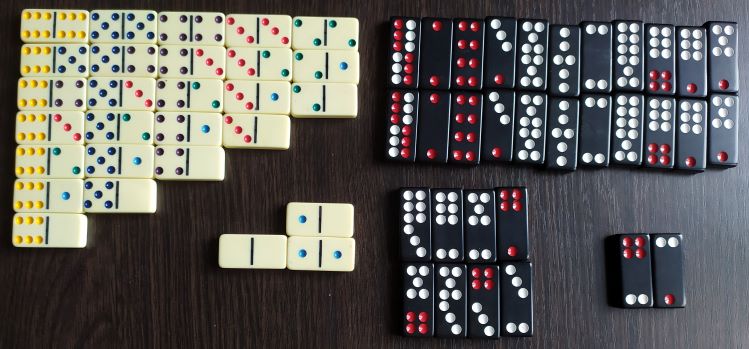
The design of the [3:3] tile is different from other tiles, and on the [6:6] tile, half of the spots are colored red. Also, Chinese tiles are usually larger than European ones.
There is a direct connection between dice and dominoes. Each tile corresponds to the values that can be rolled on two dice. There are 21 different outcomes of two dice. But there are 32 tiles. Where do the other 11 tiles come from?
Historically tiles are divided into two types – civil, Wen (文) and military – Wu (武). Civilian includes all doubles, and the following tiles: [6:5], [6:4], [1:6], [1:5] and [1:3]. All other tiles belong to the military. The most important difference between them is that all civilian tiles have two pieces each, while military tiles have only one.
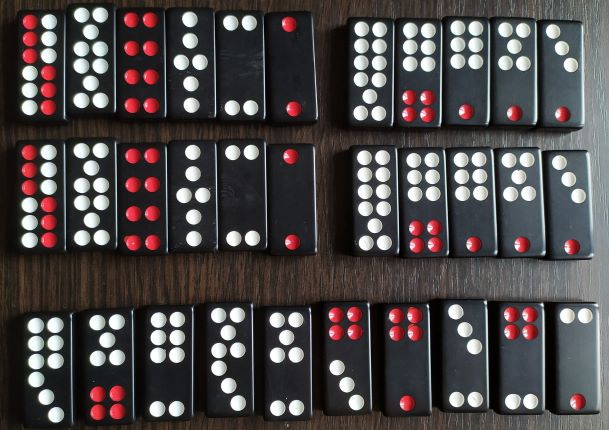
This introduces a certain asymmetry, because unlike European dominoes, there is no uniform distribution of values across the tiles. If you don’t count the doubles, there are eight tiles with ones and sixes, seven tiles with fives, six tiles with threes and fours and five tiles with twos on them.
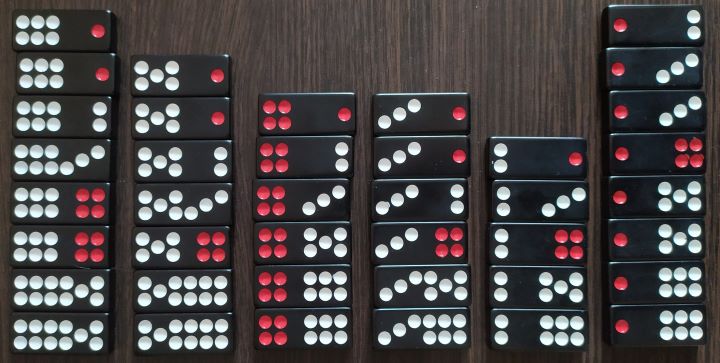
How to remember which tiles belong to which type? It is not as difficult as it seems at first glance. Since all duplicates are civilian, you only need to remember five more tiles that belong to civilians and then easily determine the military ones by exclusion. These five tiles are: two largest tiles with sixes (excluding the double) [6:5] and [6:4], two largest tiles with ones – [1:6] and [1:5], as well as a special tile that symbolizes “harmony” or “peace” – [1:3]. Although often [1:3] tiles are simply called a goose. We will return to the symbolism of Chinese dominoes later.
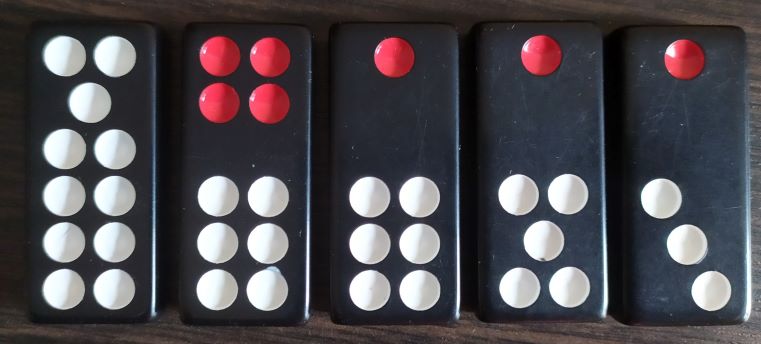
Chinese dominoes can be bought online, especially in Chinese stores. You should look for Pai Gow or Tien Gow (read the product description carefully to buy dominoes, not baking molds). If you are going to order dominoes from China, I advise you to take two sets right away, because some games require exactly two sets. And even though those games are a minority, the sets are not that expensive.
You can also make a set for the game by using two sets of plain European dominoes, removing unnecessary tiles and painting fours, ones and half of dots on the double-six in red (colours matter in few of the games, but Tien Gow and Pai Gow are not one of them). The special double-three design does not play any role other than aesthetic and not all Chinese sets follow the design.
Before studying the first game, it is necessary to say something about the traditions of the game of Chinese dominoes.
First, they are played mostly for money. But since playing for money can be prohibited, playing cards are often used as chips and are exchanged.
Second, deck of dominoes, after shuffling, is laid out as a wall, placing several tiles on top of each other, so that several towers of, usually, four tiles are obtained. The towers are often not as neat as in the photo.
Third, first player to take tiles from the deck is determined by the fall of the dice.
Fourth, during the deal the players pick dominoes taking arbitrary tiles in turns from the wall, usually two at a time, although whole towers can be taken.
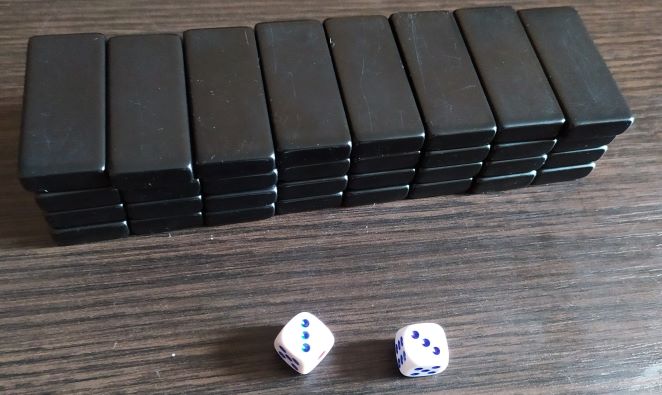
All these rules can be ignored. The calculation can be converted into ordinary points, although sometimes it is more convenient to use chips. Dealing tiles in the European manner does not change anything for the games themselves, it only takes away the authenticity.
Equipped with this knowledge, you may now play the first type of games – Connecting Games. They, unlike some other games, will look familiar.